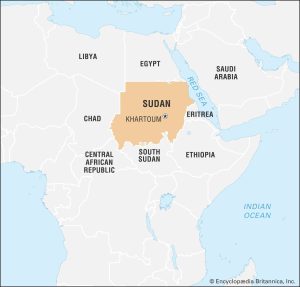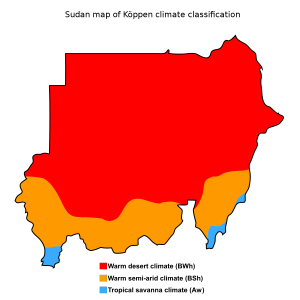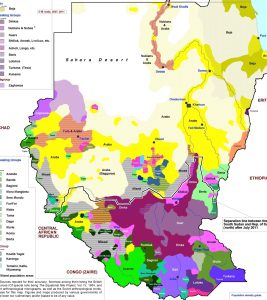History
Sudan, officially known as the Republic of Sudan, is a country located in northeastern Africa. It has a long and complex history, characterized by political instability, economic struggles, and ongoing conflicts.
The region that is now known as Sudan has been inhabited by various groups of people for thousands of years. One of the earliest known civilizations in the area was the Kerma culture, which flourished between 2500 BCE and 1500 BCE (Kubovich, 2019). Later, the region was ruled by the pharaohs of ancient Egypt, and it was a major center of the trade routes that connected the Mediterranean world with sub-Saharan Africa (Bevan, 2016).
In the 19th century, Sudan came under the control of Egypt, which was then ruled by the Ottoman Empire. However, this period was marked by a series of rebellions against foreign rule, including the famous Mahdist War of 1881-1899 (Holt, 2016). The Mahdi, a charismatic religious leader, led a popular uprising against the Egyptian and British forces that were occupying the region, and his followers succeeded in establishing an independent Islamic state in Sudan.
The period of Mahdist rule was short-lived, however, as the British soon returned to Sudan and reestablished their control over the country. Sudan remained under British rule until 1956, when it gained its independence. However, the newly independent Sudan faced numerous challenges, including political instability, economic underdevelopment, and social unrest (Makki, 2019).
One of the most significant events in Sudan’s recent history was the civil war that broke out in 1983. This conflict pitted the government of Sudan against various rebel groups, and it lasted for more than two decades, resulting in the deaths of an estimated 2 million people and the displacement of millions more (Sawyer, 2019). The civil war was fueled by a range of factors, including ethnic and religious tensions, economic inequality, and political marginalization.
Today, Sudan continues to face numerous challenges, including ongoing conflicts, economic struggles, and political instability. However, the country has also seen some positive developments in recent years, including the ousting of long-time dictator Omar al-Bashir in 2019 and the establishment of a transitional government that has pledged to work towards democracy and stability (BBC News, 2019).

Location
Sudan is a country located in Northeast Africa, bordered by Egypt to the north, Ethiopia to the east, South Sudan to the south, the Central African Republic to the southwest, Chad to the west, and Libya to the northwest (CIA World Factbook, 2021). The country has an area of approximately 1.9 million square kilometers and a population of around 43 million people (World Bank, 2021).
Sudan is situated in the arid and semi-arid region of Africa, characterized by the Sahara Desert in the north and the Sahel savannah in the south. The country lies within the tropics, with the equator passing through its southern regions (Food and Agriculture Organization, 2021). The Nile River, one of the world’s longest rivers, runs through Sudan, dividing the country into eastern and western regions.
The location of Sudan has influenced its history, economy, and social dynamics. Its strategic location on the Nile River has made it a crucial hub for trade and transportation in the region. The country’s position between North Africa and Sub-Saharan Africa has also contributed to its cultural diversity, with influences from Arab, African, and Islamic traditions (Abdul-Jalil & Eltigani, 2019). However, Sudan has also been affected by conflicts and instability, particularly in its western region of Darfur, due to the overlapping interests of neighboring countries and ethnic groups (BBC News, 2021).

Climate
Sudan is a country located in northeastern Africa, which has a diverse climate due to its location near the equator and the Sahara desert. According to the CIA World Factbook (2021), the country has a tropical climate in the south and a desert climate in the north. The south experiences two rainy seasons, while the north is dry throughout the year. The country’s climate is also influenced by the Nile River, which runs through it, and the Red Sea to the east.
The southern part of Sudan has a tropical climate characterized by high temperatures and rainfall throughout the year. The wet season occurs from April to October, while the dry season is from November to March (NOAA, 2021). The region receives an average of 600-800 mm of rainfall annually, which supports the growth of vegetation and crops such as sorghum, millet, and cotton (FAO, 2021).
On the other hand, the northern part of Sudan has a desert climate with hot temperatures and low precipitation. The region experiences little to no rainfall throughout the year, and the temperatures can reach up to 50°C during the day and drop to 0°C at night (CIA, 2021). The lack of rainfall and vegetation limits agricultural activities in the area, and most of the population relies on livestock farming and nomadic lifestyles.
The climate of Sudan is also influenced by the Nile River, which provides water for irrigation and supports agriculture in the country. The river also moderates the temperature in the surrounding areas, providing relief from the scorching heat of the desert climate (NOAA, 2021).
Moreover, the Red Sea to the east of Sudan influences the climate of the country by moderating the temperature and bringing moisture to the coastal areas. The sea breeze cools the region during the day and raises the humidity levels, which supports the growth of vegetation such as mangroves and coral reefs (CIA, 2021).
In conclusion, the climate of Sudan is diverse due to its location near the equator and the Sahara desert. The southern part of the country has a tropical climate with two rainy seasons, while the northern part has a desert climate with little to no rainfall. The Nile River and the Red Sea also influence the country’s climate, providing water for irrigation and moderating the temperature in their respective areas.

Languages
Sudan is a country located in Northeast Africa, and it has a diverse linguistic landscape. Arabic is the official language of the country, but there are over 70 other languages spoken throughout Sudan. The majority of these languages belong to the Nilo-Saharan and Afro-Asiatic language families.
One of the most widely spoken languages in Sudan is Sudanese Arabic. It is a dialect of Arabic that has been heavily influenced by the country’s indigenous languages. Sudanese Arabic is spoken by approximately 70% of the population and is used in everyday communication, government, education, and the media (Mohamed, 2015).
Another widely spoken language in Sudan is the Nubian language. It is a group of closely related languages spoken by the Nubian people who live in the northern part of the country. Nubian is used in everyday communication and has been recognized as an official language in some parts of Sudan (Bender, 2000).
The Dinka language is another significant language spoken in Sudan. It is spoken by the Dinka people, who live in the southern part of the country. Dinka is part of the Nilo-Saharan language family and has a unique writing system. It is used in everyday communication and is also taught in schools (Gordon, 2005).
The Beja language is another widely spoken language in Sudan. It is spoken by the Beja people, who live in the eastern part of the country. Beja is part of the Afro-Asiatic language family and has several dialects. It is used in everyday communication, and efforts have been made to promote its use in education and the media (Hancock, 2011).
In conclusion, Sudan has a diverse linguistic landscape with Arabic being the official language and over 70 other languages spoken throughout the country. The most widely spoken languages include Sudanese Arabic, Nubian, Dinka, and Beja. These languages are used in everyday communication, education, government, and the media, and efforts have been made to promote their use in various contexts.





